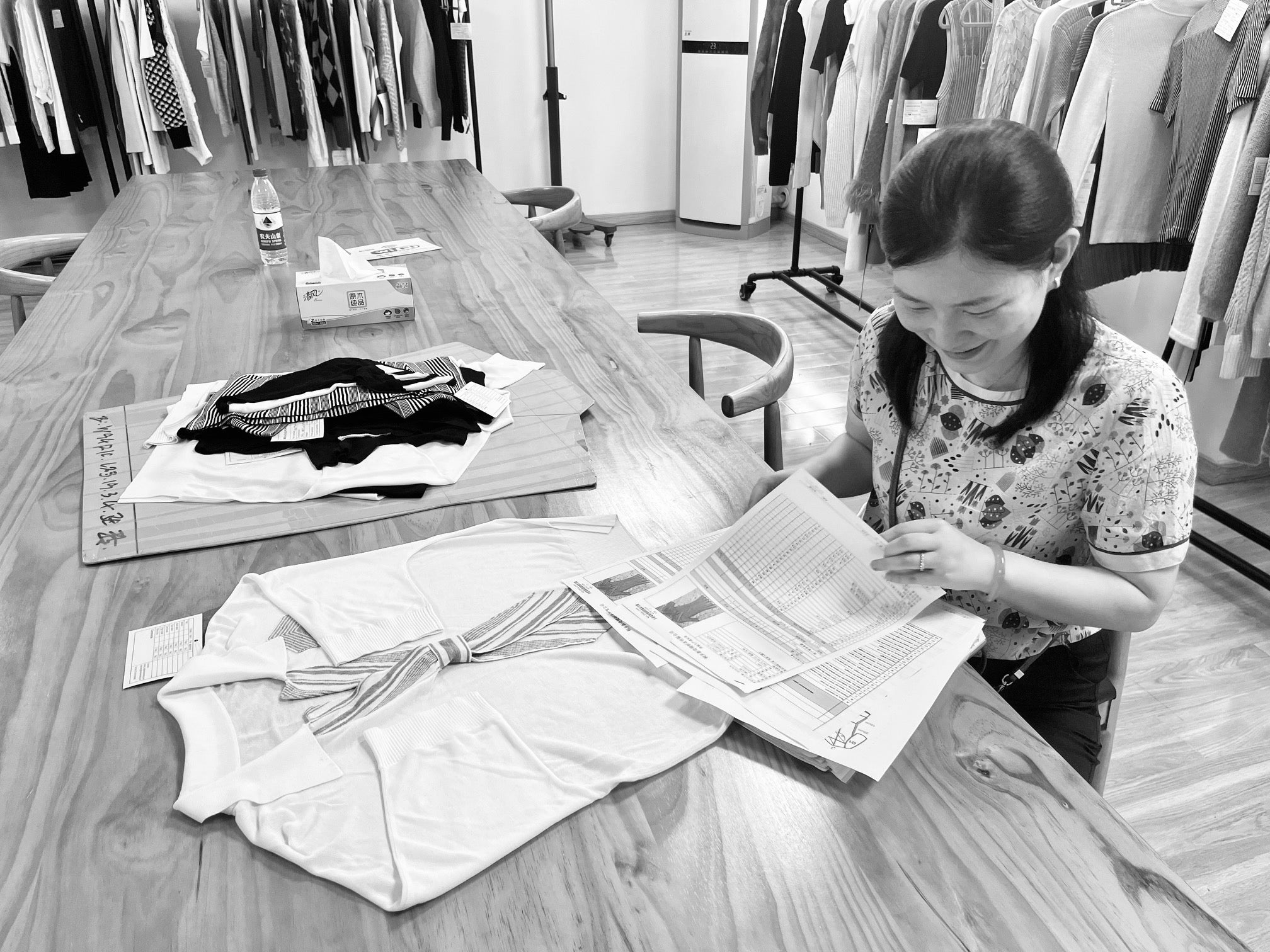At the beginning
This subject has been one of much internal debate since the conception of Combelle, as I wanted to put sustainable practices at the heart of the brand’s values.
So, local production seemed the natural choice.
The business began with the search for a suitable knitwear workshop. I started the search locally within a 50 mile radius, and I found many, but none were a good match so it soon extended further afield. At the same time I started attending local yarn fairs, and building up a library of yarns in the design studio ready.
After interminable knocking on doors, & the help of an agent friend, I began meeting with factory owners, however it quickly became apparent that the complexity of the designs was working against me, as they leafed, wide-eyed, through the design packs, telling me I must simplify, remove, eliminate.
It was 6 months before a factory finally agreed to work with me (it was also ironically the first factory I had ever approached, acquiescing after I decided it was worth one last try). It seemed like a dream, I could reach them by car (a short drive over rolling hills in a 1966 Fiat 500, very Instagrammable!).

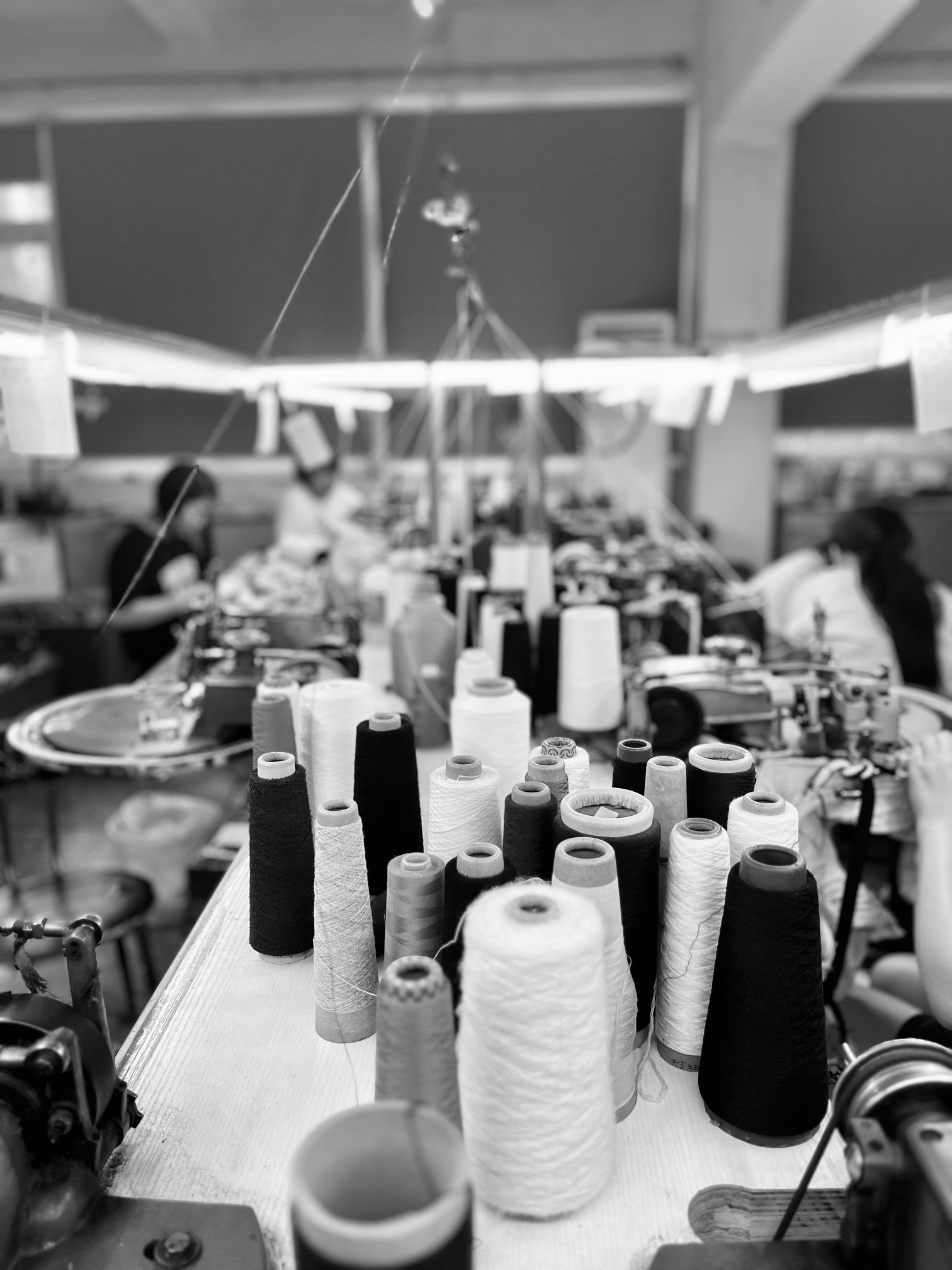
A false start
The development began for the 5 styles that were to comprise the launch collection, however looking back I can say that it was apparent from the off that the knit quality & technical interpretation of the designs was not what I needed it to be. The knit construction was heavy and somehow the luxuriousness of the beautiful viscose-silk yarn seemed to have been lost. Various finishes could not be offered, stripe angles could not be improved, & the technology at hand was limited. It took 5 months to have in front me one of each sample- first versions- for review, and it was at this moment that I knew in my heart that I was trying to force something that was never going to result in the best product possible for my customer.
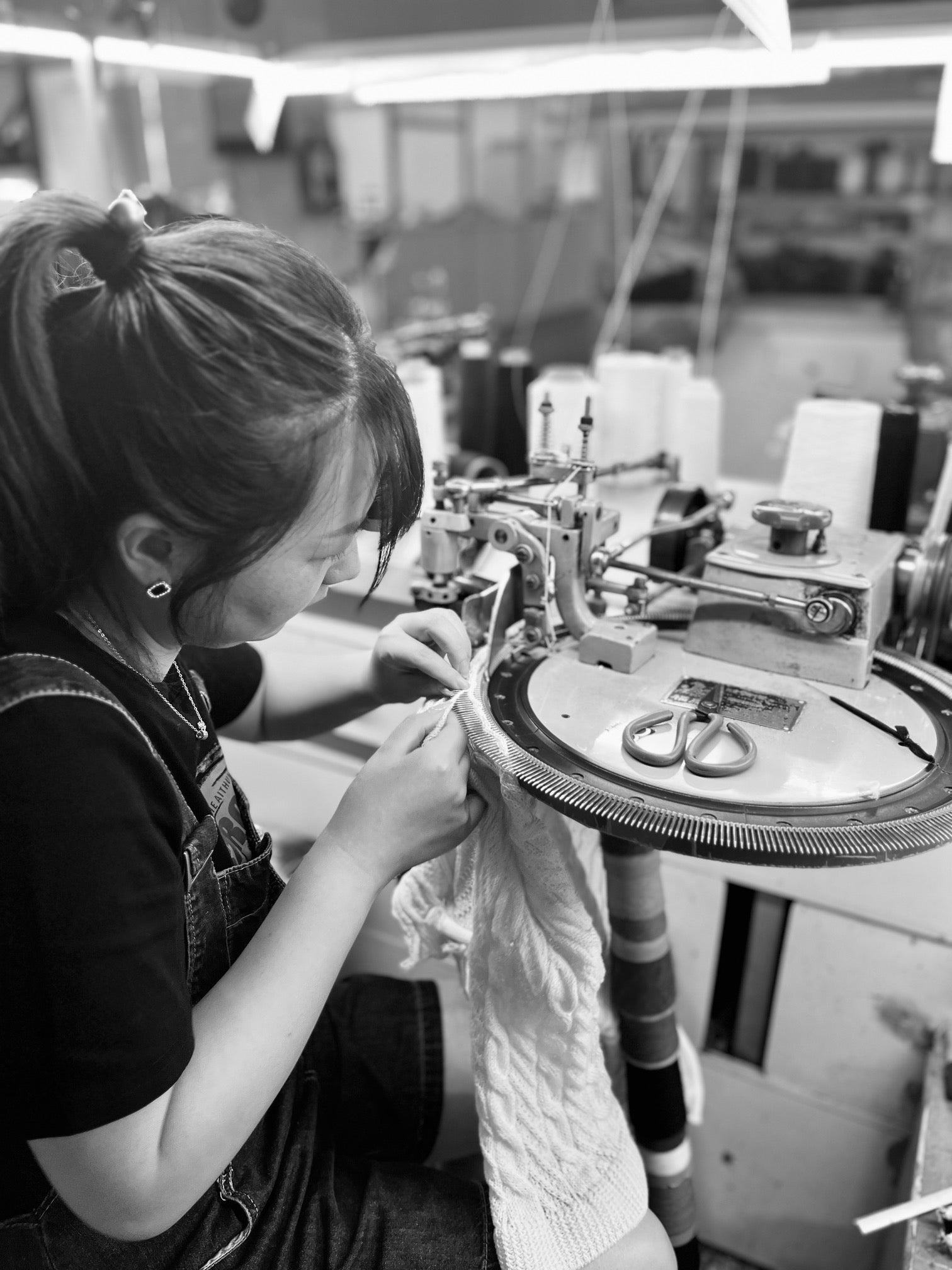
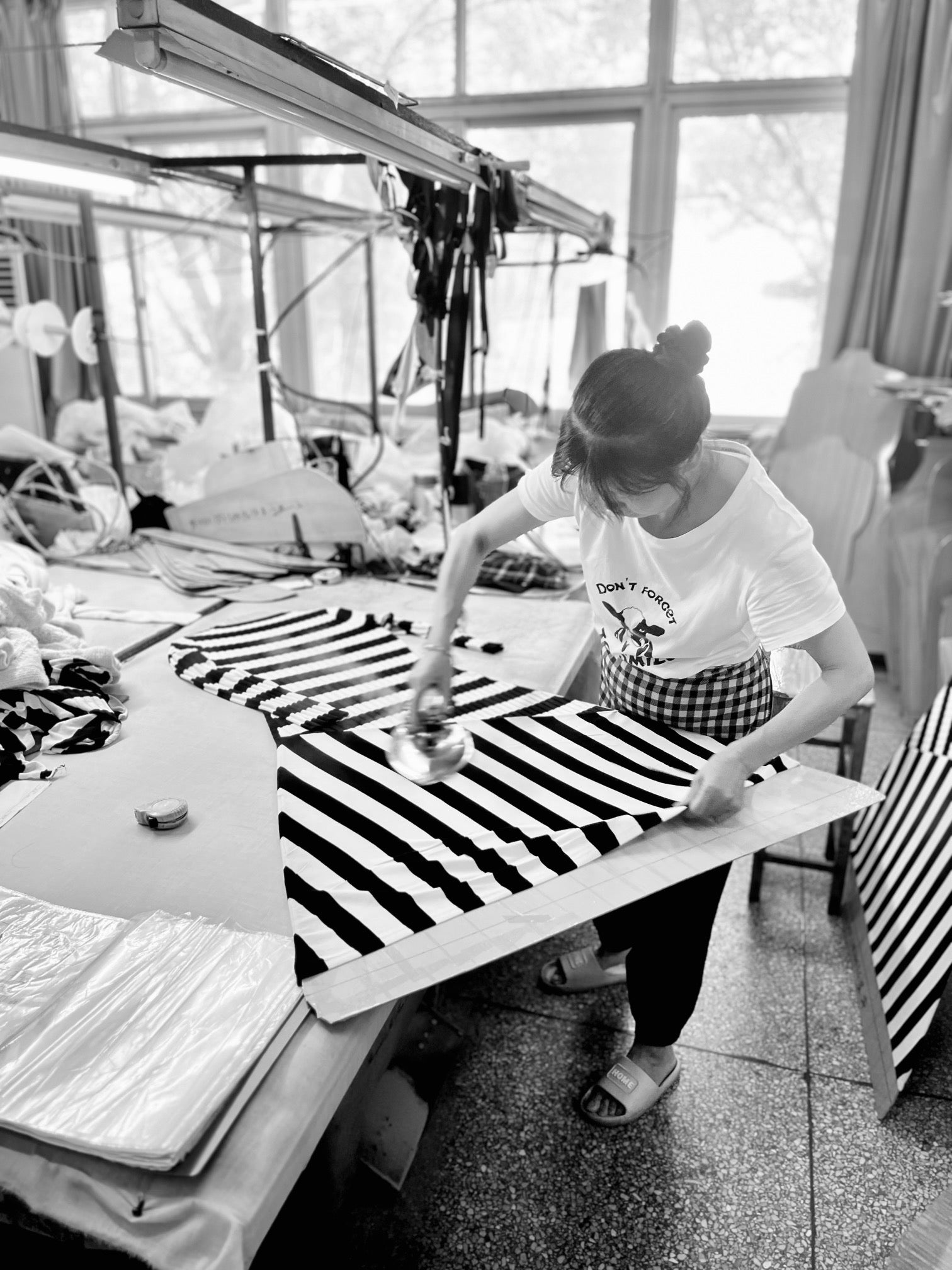
A different approach
The previous summer- whilst still busy knocking on factory doors closer to home- I had attended a sustainable sourcing fair in London. I had left with many potentially suitable manufacturing contacts, and I had followed these up and began test-sampling, by sending the same design to each factory to see their speed, their workmanship, their development communication. Many I walked away from before seeing a sample, and in the end, only one came through. And they came through with flying colours
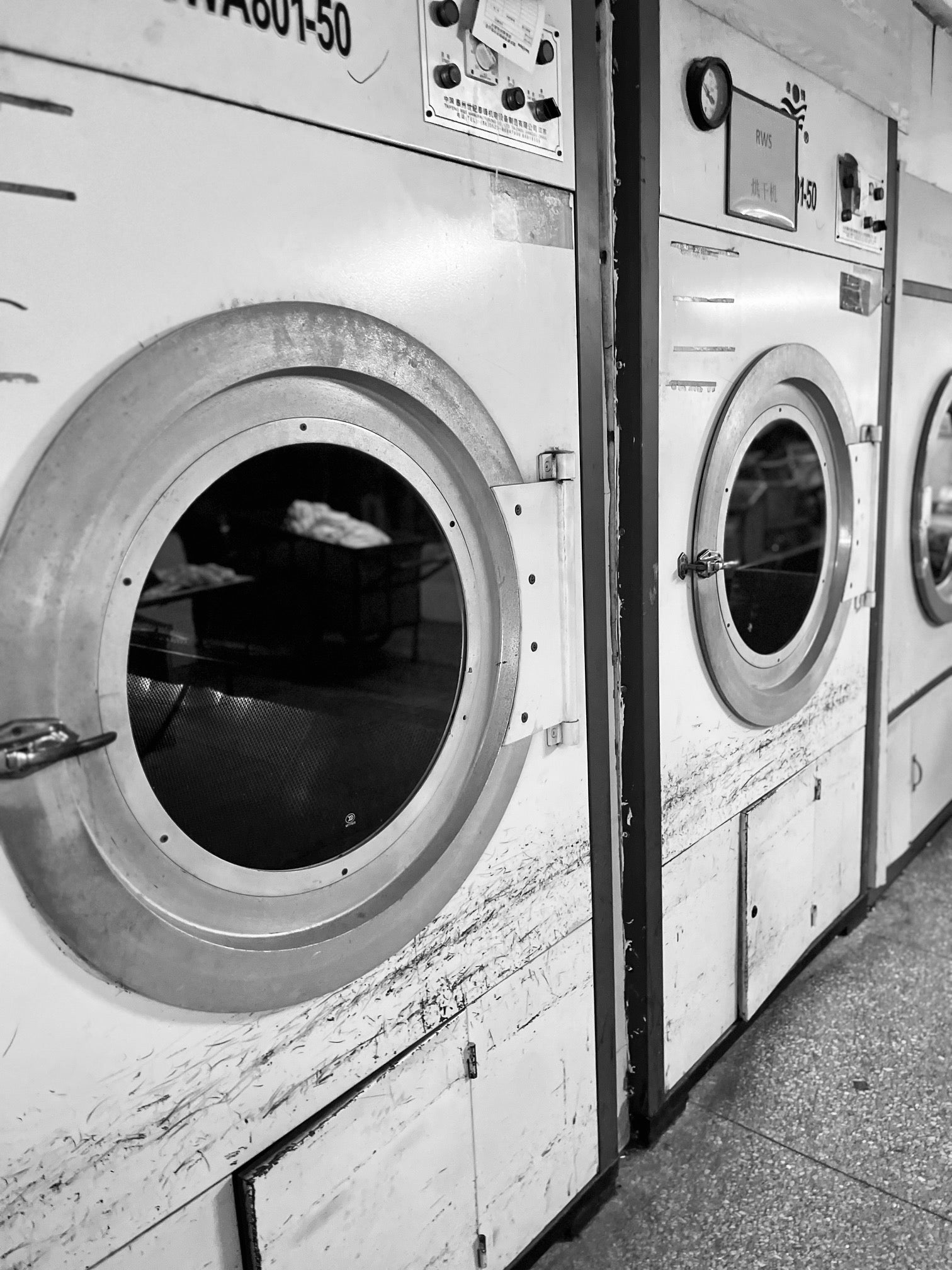
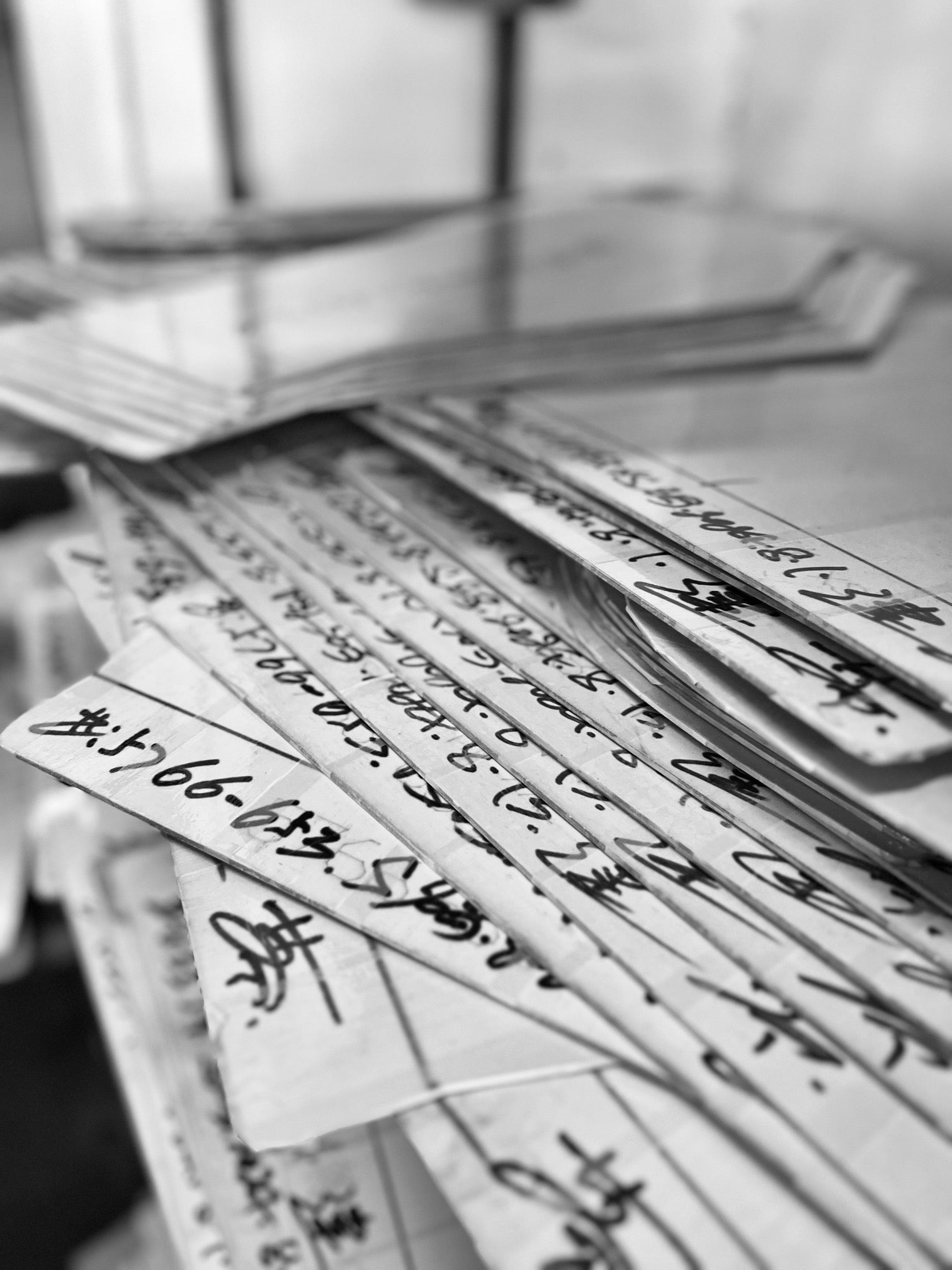
Following my intuition
This was a very well-established knitwear factory located a little inland from Shanghai. SMETA audited, certified for RWS, OCS, RCS and with sound Environmental & Biodiversity policies in place, I felt the only remaining drawback was the geographical distance. This was a far-cry from even European production, however I cannot deny that after 6 years of working very closely with two factories further south in Guangzhou for my previous business, I was a little in love with Chinese production. I am all too aware of the negative association with ‘made in China’, however my personal experience had been unforgettably positive, and lifelong friendships remain from those years. Neither factory produced knitwear (although one offered to invest and start producing it for me when I told them about my plans to start a brand…you’ll note an attitude a little different from what I had encountered closer to home). Contracts had dissolved into pure trust, and a synchronicity of working practice and process had evolved in very little time. They had an unshakable work ethic, they were responsive, transparent, efficient, and incredibly organised.

Undeniable technical expertise
Charing, my contact in Shanghai, took 3 weeks to make up the sample as per the design sent. Processes to overcome the construction challenges were discussed over email, and inspired solutions were suggested. Some of the finishing techniques that the local factory had been unable to reproduce had been applied to this sample, as I had it in my hands long before I began the slow process of sampling with them. In reality, the test sample that Charing sent to me had been perfect. Sealable, right from the first sample, which given how technically complex it was (this was the Alix top as you know it), was a little short of a miracle.

